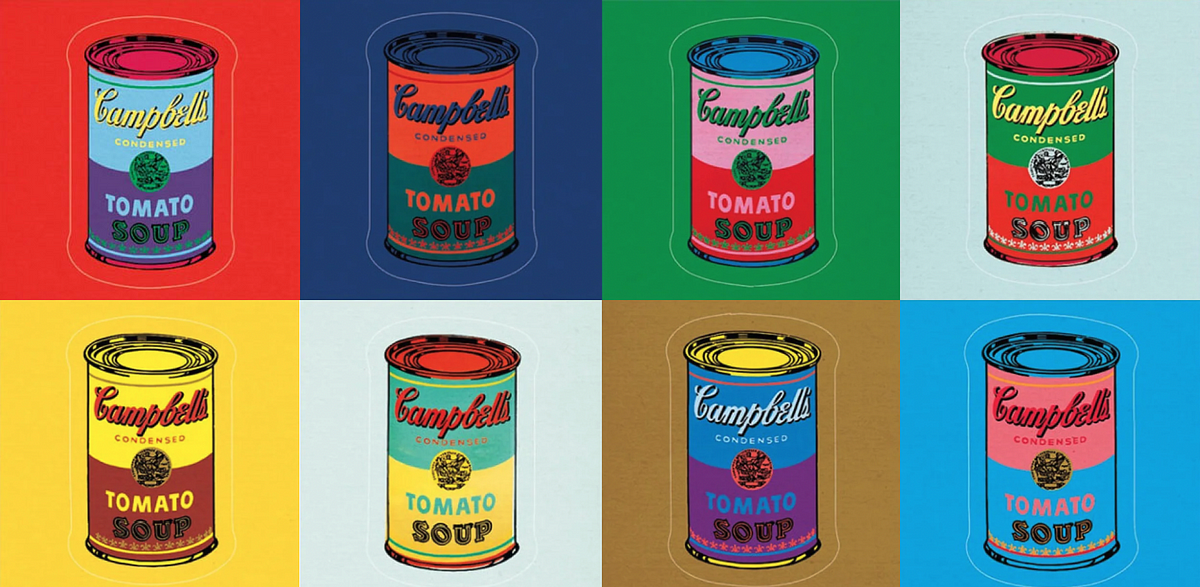Recreating Warhol's Interactive Art Experience with Analog Materials
Kernekoncepter
Core Message here
Resumé
In a hypothetical scenario, Andy Warhol time travels to 2024 and falls in love with computer interaction. Upon returning to 1960, he aims to recreate the experience using analog materials. This content explores how Warhol would mass-produce interactive art resembling a modern web page without digital tools.
Tokens in design systems are categorized into three tiers, each adding distinct capabilities. The discussion delves into a Tier 2 design token naming convention based on CTI+ Taxonomy for envisioning a light/dark mode design system.
What if Warhol created design tokens in Figma?
Statistik
Tokens are split into 3 levels, each adding specific capabilities to the design system.
Citater
"Imagine a world where the famous American artist, Andy Warhol stepped into a time machine in 1960 and arrived in the year 2024 where he fell in love with interacting with computers and smartphones."
"If Warhol wanted to mass produce a mixed-media art piece that looks and feels like a modern web page (without a computer or internet) how would he approach producing it?"
Vigtigste indsigter udtrukket fra
by Kevin Muldoo... kl. uxdesign.cc 12-28-2023
https://uxdesign.cc/warhol-design-tokens-3acd49431484
Dybere Forespørgsler
How can traditional art techniques be adapted to mimic modern digital interactions
Traditional art techniques can be adapted to mimic modern digital interactions by incorporating elements such as light, motion, and tactile feedback. For example, using reflective materials or hidden mechanisms within the artwork to create an interactive experience for viewers. Artists can also explore the use of color-changing pigments or textures that respond to touch, simulating the dynamic nature of digital interfaces. By experimenting with different materials and techniques, artists can bridge the gap between traditional art forms and contemporary digital experiences.
What challenges might arise when translating digital experiences into analog formats
One challenge that may arise when translating digital experiences into analog formats is the limitation of technology available in traditional art mediums. Unlike digital platforms where animations and complex interactions are easily achievable, replicating these features in physical artworks may require innovative solutions. Artists would need to carefully plan and execute each interactive element within the constraints of analog materials, which could pose technical challenges in terms of functionality and durability.
Additionally, maintaining consistency in user experience across different analog pieces could be challenging due to variations in craftsmanship and material properties. Ensuring that each artwork delivers a seamless interaction while capturing the essence of modern web design poses a significant challenge for artists working with traditional methods.
How does the concept of time travel influence artistic innovation
The concept of time travel can influence artistic innovation by providing artists with a unique perspective on technological advancements and cultural shifts over time. When imagining how Andy Warhol's return from 2024 to 1960 impacts his artistic vision, we see how exposure to future technologies inspires him to experiment with new ways of creating interactive art without access to computers or internet.
By exploring this hypothetical scenario through a Tier 2 level design token naming convention based on CTI+ Taxonomy for light/dark mode design systems, we delve into how historical context intersects with futuristic concepts to drive creative exploration. The idea of bridging past traditions with future possibilities opens up avenues for artists to push boundaries and reimagine artistic practices through a lens that transcends temporal limitations.
0
